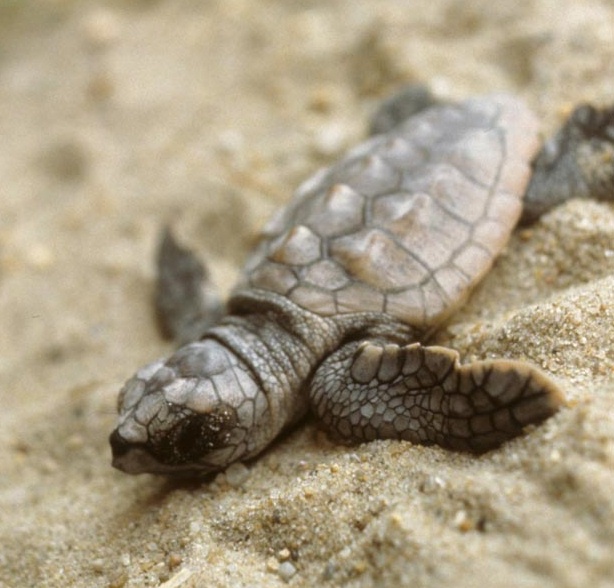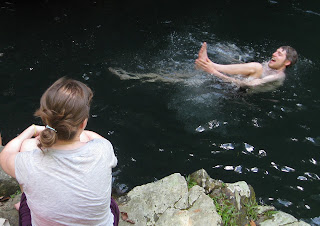
Louisiana marsh, photo by USGS
This post is now on Google News. Also on Basilandspice.com which is partnered with Newstex, TOPIX, EIN McClatchy-Tribune News Service and other media outlets.
On Thursday April 29, the slick from the oil gushing into the Gulf of Mexico covered about 1,150 miles. By the end of the next day, the size of the oil slick had more than tripled to 3,850 miles. Said Hans Graber of the University of Miami, this rapid rate of expansion suggests that the oil is now spurting from the ocean floor much more quickly than it was.
The broken oil well that’s spewing more than 200,000 gallons per day is a mile underwater, making efforts to shut it off extremely difficult. Crews are using at least 6 remotely operated vehicles to try to stem the flow, but so far have been unsuccessful. It may be weeks or even months before the gush is stopped.
Long term consequences to coastal ecosystems and fish
What are the long term repercussions of such an unprecedented volume of oil hitting our Gulf Coast, and perhaps the coasts of Florida, Georgia, North and South Carolina as well? The Gulf spill is at the top of “the Loop Current,” a part of the Gulf Stream that sends water around Florida and as far north as Cape Hatteras, NC.
Many people are focused on the impact to the fishing industry, which will indeed be hit hard. “Louisiana, after Alaska, is the second-largest seafood producing state,” said Dr. Ralph Portier of Louisana State University. The wetlands of the Mississippi Delta are essential to much of that sea life. Many oceanic fish lay their eggs in protected estuaries and marshes, where the hatchlings are safer from predators and food may be more accessible. Crabs, shrimp, and oysters are also completely dependent on coastal wetlands. “Every crevice, creek, bayou, bay, where water flows in and out of coastal grasses – that’s the habitat for all these coastal nurseries. If we lose it or it’s impacted, we have a real long-term effect,” said Dr. Portier of LSU.
Marsh grasses are naturally resilient, but the coastal ecosystem of Louisiana has already experienced a number of serious insults. According to the U.S. Geological Survey, the hurricanes of 2005 turned about 217 square miles of marsh into water. If nature had been left alone, that marshland would be replenished by sediment flowing down the Mississippi River. But levees holding back the Mississippi River prevent the natural deposition of sediment. The marshes are chopped up by navigation channels and pipeline canals, too, which allow saltwater into freshwater marshes, slowly killing the marshes.
“Hanging by a fingernail”
“The trouble with our marshes is they’re already stressed, they’re already hanging by a fingernail,” said Dr. Denise Reed of the University of New Orleans.
And yet it now seems possible that the influx of oil from the still-gushing well in the Gulf could deliver the killing blow to the whole coastal ecosystem. The volume of oil that now seems likely to wash up on the Louisiana coast could overwhelm the coastal grasses’ ability to recover. If the roots die, the plants die and the ground underneath turns to mud and disappears into the sea within a year, said Dr. Irving Mendelssohn of Louisiana State University.
Even if the volume of oil does not increase dramatically, it is still likely to move through channels into the saltwater marshes. Then, even a minor tropical storm could send it farther inland to the freshwater marshes, which are more fragile and almost impossible to clean, said Mendelssohn.
Especially valued fish likely to be heavily impacted include the Atlantic tarpon and the overfished Atlantic bluefin tuna.
What about other wildlife?
The Gulf has four species of sea turtles and all of them are endangered. Turtles and marine mammals don’t try to avoid oil slicks, said Jackie Savitz of the conservation group Oceana. Consequently they wind up eating the oil; it also blocks their airways.
Not only coastal birds, but migratory songbirds will feel the effects
Of course, thousands of shore birds and marsh birds breed in the coastal marshes of the Gulf Coast. That includes species such as white ibises, anhingas, purple gallinules, common gallinules, pied-billed grebes, wood ducks, king rails, clapper rails, black-necked stilts, killdeer, Louisana herons, black-crowned and yellow-crowned night herons, green herons, little blue herons, snowy egrets, great egrets, black skimmers, American coots, mottled ducks, and so on. But it’s not just the shore birds and marsh birds that will be impacted by a heavy or steady influx of oil on the coast. Millions of North American songbirds migrate in spring from their wintering grounds in southern Mexico and the Yucatan Peninsula to the Gulf shores, before flying on to their breeding grounds in the eastern U.S. and Canada. This phenomenon is called by birders the “Gulf Express.” It includes tiny ruby-throated hummingbirds, many species of warblers, kingbirds, thrushes, orioles, cuckoos, and more – at least 55 species in all. The flight covers 500 or 600 miles of open water for birds that may weigh no more than two 25-cent coins. Even in good years, many of them don’t make it. It all depends on good weather, physical conditioning, and luck. Thousands of birdwatchers converge on the Gulf coast and its barrier islands to witness the migratory spectacle each spring.
“If anything goes sour, the birds die”
In a very good year, the birds may arrive at the coast with enough energy to fly past the marshes, landing in forests 30 miles inland. But if the weather is unsettled, or the winds are from the north, the birds pile up along the coast. They’re hungry, thirsty, and tired. As author and birder Scott Weidensaul said about this migration, “If anything goes sour, the birds die.”
As of right now, many of the birds have already made the spring crossing, but not all. For those who haven’t yet, this may be a spring when something “goes sour”. And what about next fall, when they do the flight in reverse? And next spring – what if the marshes are all coated in oil, or the coastal grasses are all dead? Many of these bird species are already in serious trouble from habitat loss in Latin America and in the U.S.
Prospects are “terrifying”
None of us know right now the true long-term impacts of the rapidly expanding mass of toxic goo that’s floating in the Gulf of Mexico. I’m not sure anyone has even calculated yet the potential damage to coastal estuaries and marshes of the Southeastern states. But as NY Times writers Leslie Kaufman and Campbell Robertson said, the prospects for coastal land, livelihoods, and wildlife are “terrifying everyone.”
Sources:
Leslie Kaufman and Campbell Robertson. “Spill puts wetlands in peril.” NY Times. Reprinted in Charlotte Observer. May 2, 2010.
Kirsten Valle. “Some fear oil from Gulf spill could reach N.C.” Charlotte Observer. May 1, 2010.
Renee Schoof and Karen Nelson. “Oil spill is endangering a vast array of wildlife.” Charlotte Observer. April 30, 2010.
Cain Burdeau and Holbrook Mohr. “Document: BP didn’t plan for a major spill.” Charlotte Observer. May 1, 2010.
Scott Weidensaul. Living on the Wind: Across the Hemisphere with Migratory Birds. North Point Press. New York. 1999.
Some of my previous posts on coastal environmental issues:
10% of Louisiana underwater by 2100, says recent study
North Carolina’s vital coastal breeding grounds vulnerable to rising seas
Copenhagen data confirm: 10% of Florida underwater by end of the century
10,000 pythons breeding in Florida, says new USGS report





















